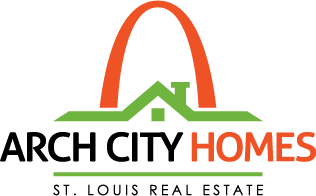Thanks to an article by Ardell DellaLoggia on Rain City Guide, I started thinking about Kelsey Group’s exclusive software, Precise Pricing, and how unique it really is when it comes to pinpointing the value of a home.
Most agents rely on recent home sales in the same subdivision to determine the value of a home that they plan to list. There is definitely value at looking a recent comps, but there is a major flaw by relying solely on recent sales to determine the value of a home.
 When a subdivision is built, there is often huge variation in price with the identical floor plan due to the upgrades that buyers select. Take 3 homes built all in the same year in the same subdivision with the same floor plan. Our imaginary house has a base price of $200,000. Buyer A adds $50,000 in upgrades. Buyer B adds $25,000 in upgrades, and Buyer C adds only $5,000 in upgrades.
When a subdivision is built, there is often huge variation in price with the identical floor plan due to the upgrades that buyers select. Take 3 homes built all in the same year in the same subdivision with the same floor plan. Our imaginary house has a base price of $200,000. Buyer A adds $50,000 in upgrades. Buyer B adds $25,000 in upgrades, and Buyer C adds only $5,000 in upgrades.
Fast forward to 10 years later, and all three homeowners are ready to move.
Let’s assume that all of the owners maintained their homes well, but didn’t do any significant upgrades. If you didn’t know that the Buyer A spent $45,000 more than Buyer C, you might think that all of the homes should be priced the same. But if you walked through all 3 homes, it should be clear that they are not equal just because they have the same floor plan.
The problem is that you can’t walk through those homes that you are using as comps, because they are already closed. So you are simply looking at the pictures posted on the MLS and hoping that they represent the home accurately. But, every buyer quickly discovers that pictures don’t accurately capture the condition and essence of a home most of the time. Even if you are an agent that works the neighborhood regularly, memories aren’t perfect…and it’s hard to remember all the little details of every house that has sold over the last few years.
So how is a buyer or seller (or their agent!) to determine the right price for a home when you can’t walk through the other homes in the subdivision?
My broker, Bryan Kelsey, has been grappling with the issue for years. He developed proprietary software for The Kelsey Group, REALTORS in order to provide accurate pricing of homes. Using Precise Pricing, all of the previous home sales data for a subdivision or city quadrant is pulled from the tax records. I’ve seen data as old as the 1970s in the tax records. The MLS, on the other hand, goes back only to 1998 for the St. Louis region.
Precise Pricing provides a wealth of information, but I’m going to mention just two of the major ways that I use it.
Annual appreciation rate:
By looking at sales record history for every home that has recently sold in the subdivision, Precise Pricing can determine the annual appreciation rate for each home, and can get an average annual appreciation rate for the subdivision.
Once you know the subdivision’s appreciation rate, you can then look at your subject house and determine what the value would be if that owner got the same appreciation rate. If all of your neighbors that have sold in the last few years have been making an annual appreciation rate of 4%, and you are asking 9% even though you didn’t make major capital improvements to the house, you are simply asking too much.
Original (or prior) sale price comparison:
Occasionally when I’m looking through the homes that sold in the last year or two in a subdivision, I’ll see a number of homes that were all sold years earlier at about the same time. There will often be wide variations in sale price, and that variation can help you identify the value of the home you are trying to price.
Back to my prior example, if the home that I am trying to price was built for the $200,000 base price plus $7,000 in upgrades, I’d be foolish to think that it is comparable to the totally decked out one that had $50,000 in upgrades. It’ more likely to be comparable to the more bare bones home that was built with $5,000 in upgrades.
So what would I do when the owner of Home X that had $7,000 in upgrades calls me and wants to sell his home? I would start with the recent sales. If I saw that the 3 other homes I mentioned at the beginning of this post all sold in the last 6 months that would give me substantive data to use to price the home.
Imagine that Seller A sold for $325,000, Seller B sold for $310,000 and Seller C sold for $299,000.
 How do we decide which price is most appropriate for Seller X? We can certainly look at the pictures and read the marketing notes. But, WHAT IF you could also go back in the tax records and see that Home A was built for $45,000 more than Home C…and Home X was built for almost the same original price as Home C. Unless you can find some solid reasons to price Home X for much more, the right price is probably closest to the $299,000 sale.
How do we decide which price is most appropriate for Seller X? We can certainly look at the pictures and read the marketing notes. But, WHAT IF you could also go back in the tax records and see that Home A was built for $45,000 more than Home C…and Home X was built for almost the same original price as Home C. Unless you can find some solid reasons to price Home X for much more, the right price is probably closest to the $299,000 sale.
There are a number of other factors that need to be considered when evaluating home pricing, including supply & demand levels, lot variations, cosmetic issues and overall market factors. But, if an agent is simply looking at the homes that sold in the last 6-12 months and what they sold for, a big piece of the puzzle is missing.
If you would like more information on how Precise Pricing can be used to identify your home’s value, contact me for a FREE home evaluation.






